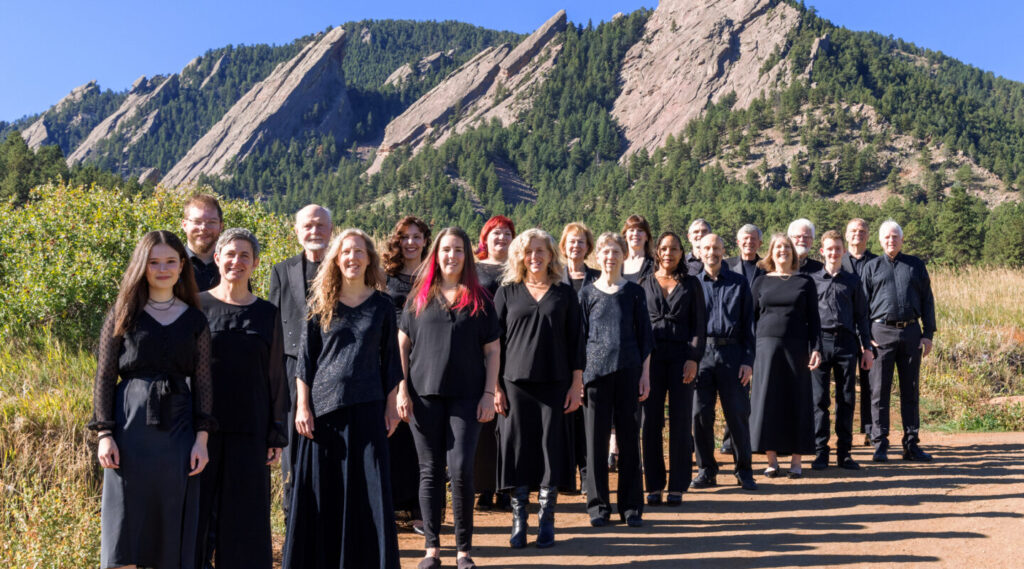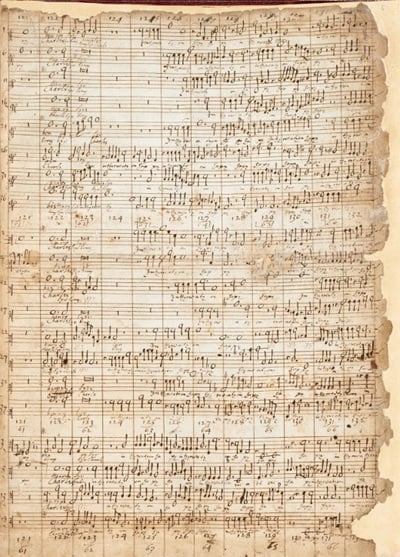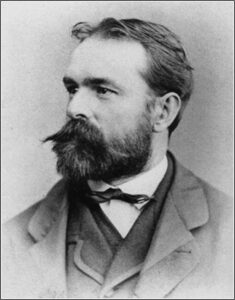Rare performance of Thomas Tallis’s 40-voice motet Spem in alium
By Peter Alexander
Sharps and Flatirons
Sometime around the year 1570, the English composer Thomas Tallis wrote what some have called his “crowning achievement.”
The work in question is more often discussed than heard: Spem in alium, a motet in 40 voices, arranged in eight choirs of five voices each. Anyone who studies the music of Elizabethan England knows of this impressive work, but it is difficult to assemble the voices for a performance, and many have never heard it live.

But now everyone in Boulder has the opportunity to experience this rare work in performance. Tom Morgan and the Ars Nova singers will perform Spem in alium Friday and Sunday in Boulder and Denver, respectively (Feb. 9 and 11; details and ticket information below). The full program, titled “Rebirth: Beyond the Renaissance,” also includes works by English composers William Byrd and Henry Purcell, music by Emilio de Cavalieri from a famously elaborate Medici family wedding in 1589, and the Mass in E-flat by the 19th-century German composer Josef Rheinberger.
This will actually be the seventh time that Morgan and Ars Nova have performed Tallis’s motet. The first time was in 1988, and they recorded the motet in 2001 on a CD titled Luminescence. Most recently they performed it in Boulder six years ago. Only a few singers are still in the group from that performance, and a few have performed it elsewhere; performing it will be a new experience for the rest.

“I think that a group that can do it, should do every eight or 10 years at least, just because it’s a good stretch for the choir and it makes such a unique sound for the audience,” Morgan says. Because the 40 parts will each be taken by a single performer, “it does require a lot of independence on the part of the singers,” he says.
The 40 voices are divided into eight separate choirs of five voices each. “There’s a fair amount of historical context that this was originally done in an octagonal banqueting hall, so there was a choir in each of the eight bays,” Morgan says. “I think that was how Tallis conceived of it.
“Clearly he thought about it spatially. It moves from one side of the choir all the way across in a direct line to the other side. When the fortieth voice comes in and imitates that melody at the completion of the phrase, we reach the fortieth measure of the piece, and everybody comes in. It’s a very dramatic moment.”
The program moves chronologically from the late Renaissance forward. “The first half of this concert is all within about 20 years between about 1570 and 1590,” Morgan says. “Then (after intermission) we have Purcell, who is 100 years later.”
Two other pieces on the first half are worthy of attention. They were the final two pieces in the first book of choral music printed in England. Queen Elizabeth I had granted an exclusive right for music publishing to Tallis and his contemporary, William Byrd, and they ended the publication with what we might call puzzle pieces, one by each.
“They’re fascinating works,” Morgan says. “The first one (by Tallis, Miserere nostri) is a seven-voice canon. He derived it from one voice part, and then he does it two times slower, four times slower and eight times slower in three other parts.” Three other parts combine in complex ways with those four, to make up the total of seven parts.
Byrd’s Diliges Dominum is complicated and interesting in an entirely different way. It is made up of four canons, in which pairs of singers hold a single copy of the music between them, looking at it from opposite sides. Each one reads it from the top to the bottom, as they are seeing the page, with their partner reading it in the opposite direction.
This sounds like some kind of compositional exercise, but, Morgan says, “what I like about both of these pieces is they don’t sound at all academic. They make lovely sounds—it’s really just sonically beautiful. That they are able to do that, given those strictures, is pretty amazing.”
Moving forward in time, the program ends firmly in the Romantic era with Rheinberger’s Mass in E-flat for double chorus, written in 1878. This is well outside of Ars Nova’s usual repertoire of either Renaissance or contemporary music. That might seem surprising, but “I’ve ways wanted to do this Mass because it’s a multi-voice piece, with two four-part choirs,” Morgan explains.

“It has a lot of antiphonal chorus and a fair amount of imitation, so it does have a Renaissance feel, and yet it inhabits this19th-century harmonic world which is so lush and wonderful!”
# # # # #
“Rebirth: Beyond the Renaissance”
Ars Nova Singers, Thomas Morgan, conductor
With Szilvia Schranz, soprano, Brian du Fresne, harpsichord, and soloists from the chorus
- Thomas Tallis: Loquebantur
—Lamentations of Jeremiah, Set I - Two Musical Puzzles from Cantiones Sacrae, (1575)
Tallis: Miserere nostri
William Byrd: Diliges Dominum - Music from a Royal Wedding (Florence 1589)
Emilio de Cavalieri: O che nuovo miracolo - Tallis: Spem in alium
- Henry Purcell: “If music be the food of love”
—“Hear my prayer O Lord” - Josef Rheiberger: Mass in E-flat for double chorus
7:30 p.m. Friday, Feb. 9
Mountain View United Methodist Church, 355 Ponca Place, Boulder
2:30 p.m. Sunday, Feb. 11
Central Presbyterian Church, 1660 No. Sherman St., Denver